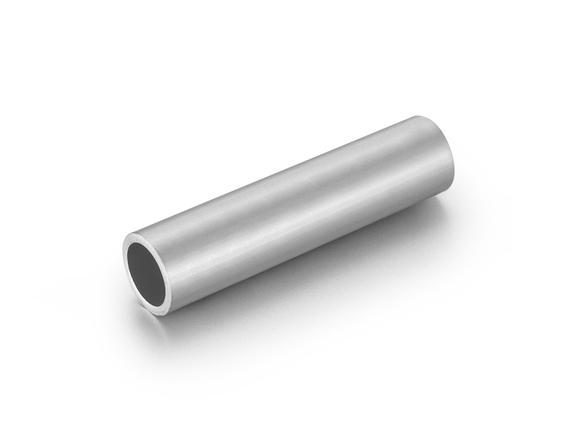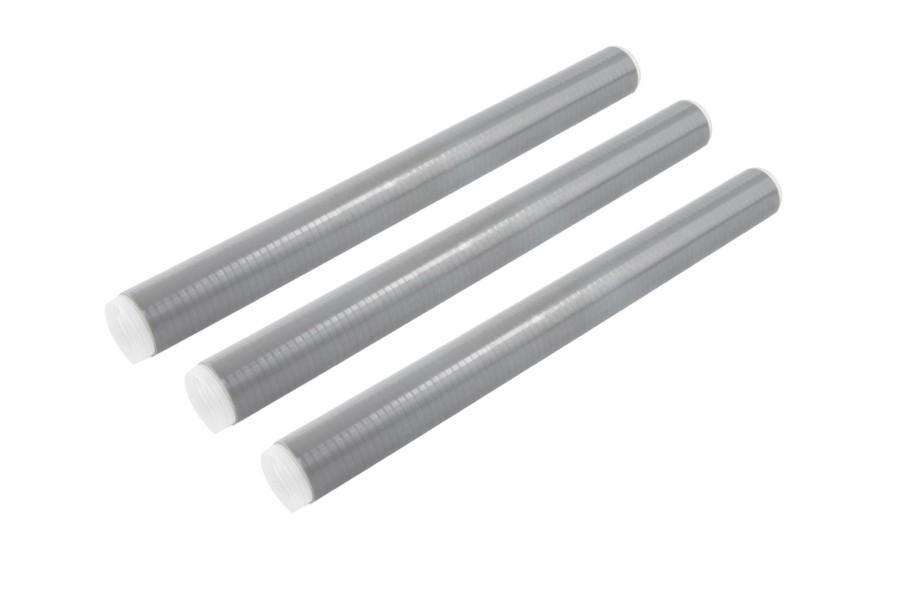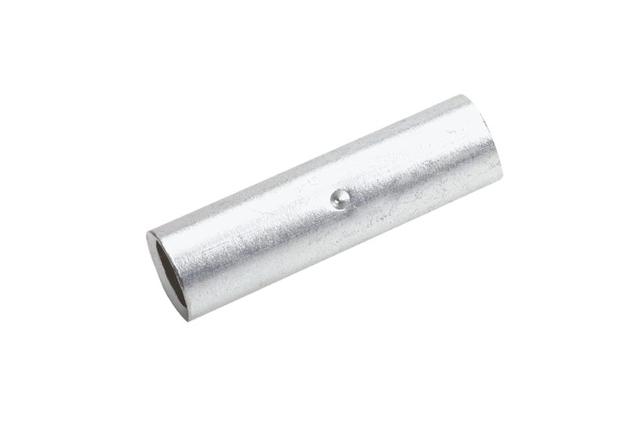Views: 0 Author: Site Editor Publish Time: 2025-10-20 Origin: Site











You want every electrical project to be safe and reliable. A connecting pipe helps by stopping rust and saving energy. This keeps your system safe for a long time. The connecting pipe is made to give tight, safe connections. It works well when you join copper and aluminum conductors. You can trust a connecting pipe to follow strict safety rules. It helps your work pass every inspection. Pick Mingxu connecting pipe to make your jobs safer and better. It also makes your work more flexible. Using a connecting pipe shows that safety is most important to you.

Connecting pipes help keep electrical projects safe. They stop rust and make sure connections stay tight.
Strong materials like copper and aluminum make connecting pipes last a long time. This helps you spend less money fixing things later.
Connecting pipes let electricity flow well. This means less energy is lost and things do not get too hot. Your electrical system works better and stays safe.
Connecting pipes come in many sizes and looks. You can match them with different cables. This makes them good for many kinds of projects.
Connecting pipes are simple to put in. This saves time and helps finish projects faster. It also lowers the cost of work.

You want your electrical system to last a long time. Connecting pipes use strong materials like copper, aluminum, and tinned copper. These materials protect against rust and damage. The pipes work well in tough places and with daily use. If you pick connecting pipes, they keep working even when things get rough.
Here is a table showing how long different pipe materials last in factories:
Pipe Material | Average Lifespan |
|---|---|
Carbon Steel | 20–50 years |
Stainless Steel | 50+ years |
Ductile Iron | 50–70 years |
PVC/HDPE | 25–50 years |
Concrete | 50+ years |
You can see that picking the right pipes saves you money over time. The round shape of connecting pipes makes them even stronger. This shape helps stop the pipes from bending or snapping. You can trust these pipes for both inside and outside jobs.
You need pipes that let electricity flow easily. Connecting pipes made from copper let the most electricity pass through. Aluminum and tinned copper also work well. The right material helps your system use less energy and stay safe.
Here is a table comparing how well different materials carry electricity:
Material | Conductivity (IACS) |
|---|---|
Copper | 99.7–99.9% |
Aluminum | Lower than copper |
Using pipes with high conductivity helps stop overheating. This keeps your system safe and working well. The even hollow shape of these pipes makes them fit tightly, which lowers resistance. You can use simple tools to put in or crimp the pipes. This makes it easy to install them the right way.
Tip: Using the right tools for connecting pipes, like crimpers and cutters, helps you make a strong connection and keep resistance low.
You want your electrical projects to be flexible. Connecting pipes come in many sizes and finishes. This means you can match them to any cable or busbar. You can pick tin-plated or bare finishes, depending on what you need. This makes connecting pipes useful for power, factories, and green energy.
Here is a table showing different types of pipe connectors and what they do:
Type of Connector | Description |
|---|---|
Traditional Copper | Installed using a four-ram press, compressing the connector into the cable conductors. |
Bimetallic Connector | Joins copper and aluminum cables, with one half being copper and the other aluminum. |
Field-Machined Connector | Used in newer systems with laminated polypropylene paper tape for insulation. |
You can use different ways to connect pipes for your job. Some ways need special tools, but others only need simple tools. The tools you need depend on the connector type and pipe size. This makes it easy to change for any project.
International rules like IEC, CE, and ISO help make connecting pipes safe and good quality. These rules make sure the pipes are safe and work well. When you use pipes that follow these rules, you know they will pass checks. This also lets you use the same pipes in jobs all over the world.
Note: Having choices in size, finish, and how you install means you can always find the right connecting pipes and connectors for your job.
You want your plumbing jobs to go quickly. Connecting pipes help you work faster. Their even hollow shape lets you slide them in easily. You get a tight fit with low resistance each time. This design means you worry less about leaks or loose spots.
Many workers say they save lots of time with connecting pipes. For example:
Modern connecting pipes can save teams two or three days per floor in big buildings.
In a 13-story hotel with 50 rooms on each floor, this can save almost a month of work.
Finishing faster means you can start your next job sooner.
You also need the right tools for the job. Here is a table showing common tools for installing connecting pipes in plumbing and electrical projects:
Tool | Purpose |
|---|---|
Pipe Cutters | Cut pipes clean and straight for a good fit. |
Pipe Wrenches | Hold and turn pipes and fittings of many sizes. |
Plumbers’ Tape | Seal pipe threads to stop leaks in threaded joints. |
Pipe Benders | Bend pipes without breaking or squashing them. |
Torch and Solder | Join copper pipes tightly by heating and melting solder. |
Level and Measuring | Make sure pipes are straight and measured right. |
Safety Gear | Keep you safe from harm while you work. |
Picking the right way to connect pipes is very important. Learning these ways helps you stop leaks and fix problems more easily.
Tip: Always use the best ways to connect pipes so your work is safe and smooth.
You want every pipe to stay strong for a long time. Connecting pipes help you feel sure about your work. Their even hollow shape gives a tight fit, so there are fewer leaks and better holds. This matters a lot in plumbing because even small leaks can cause big trouble.
Connecting pipes work well in many places:
Power systems need strong pipes to keep electricity moving.
Factories use connecting pipes for heavy work and tough jobs.
Green energy systems need safe connections to run well.
You can trust connecting pipes to meet world safety rules. They pass hard tests for quality and safety. When you use these pipes, you know your work will last under pressure. This means less fixing and fewer surprise problems.
Note: Using the best ways to connect pipes helps you stop leaks and makes fixing problems much easier.
You want to save money on every job. Connecting pipes help you do this in many ways. Their strong build and smart shape mean you spend less on repairs. You also save on work time because they are easy to put in.
Here are some ways connecting pipes help you save money:
Fewer leaks mean you spend less fixing plumbing issues.
Good pipe connections mean less downtime and more working time.
Pipes that last longer mean you do not replace them as much.
Easy fixes for pipe problems save you time and money.
When you use connecting pipes, you also spend less on upkeep. You do not have to check for leaks or fix broken pipes as often. This gives you more time for new jobs and less worry about old ones.
Remember: Using the best ways to connect pipes saves you money and stress in the future.

When you pick connecting pipes, you get strong and steady results. Many people look at connecting pipes and other conduit types, like metallic or PVC. You will see that connecting pipes have many good points:
They are tougher. Polyamide connecting pipes do not break if hit hard. Metallic conduits can dent or crack.
They bend more easily. Polyamide connecting pipes can twist and turn in tight spaces.
They do not rust. Polyamide connecting pipes last over 40 years outside. PVC-jacketed metallic conduits can rust in a few years.
They are lighter. This makes it easier to carry and put in pipes, even in big jobs like railways.
They stand up to chemicals and sunlight. Polyamide connecting pipes work well in tough places and under the sun. Some PVC pipes do not.
In real jobs, connecting pipes help you finish faster and keep things working longer. Workers use connecting pipes in solar farms and factories for safe, strong connections.
Sometimes you need to join different pipes in one system. When you use pex pipe fittings with connecting pipes, think about what they are made of. Mixing metals can cause rust or leaks. To stop this, use dielectric unions or special fittings. These keep the metals apart and protect your pipes.
Brass pex pipe fittings work with copper pipes if you use the right unions. This matters when you use more than one kind of pipe. You want every joint to be strong and safe. Always pick the right pex pipe fittings and tools for your pipes. This helps stop leaks and keeps your system working well.
Here is a table that shows common problems with pex pipe fittings and how to fix them:
Challenge | Description | Solution |
|---|---|---|
Reduced Water Pressure | Pipes that are too small or long slow down water. | Plan and size pipes the right way. |
Compatibility with Fittings/Tools | Not all pex pipe fittings fit every pipe. | Use the right fittings and tools. |
Pipe Leaks at Connections | Bad work or poor fittings can make leaks. | Use good fittings and train workers. |
Pipe Kinking During Installation | Bending pipes too much can make kinks. | Use supports or bend guides. |
Damage from UV Exposure | Sunlight can make pipes weak and break. | Keep pipes covered and use UV protection. |
Tip: Always check which pex pipe fittings you use. The right ones make it easy to put in pipes and stop leaks.
You can count on connecting pipes and pex pipe fittings to give you safe, strong, and long-lasting pipe joints in any job.
You want every project to have strong and safe connections. Connecting pipes help you get the best results for power, factories, and plumbing. The enclosed design keeps your connections safe from harm. You also save money because they are easy to put in and have smart features. That is why many people use connecting pipes for lots of jobs. You can trust these pipes to last a long time. They work well even in hard places. You know your connections will pass all tests. You pick connecting pipes because they always work.
Many workers pick connecting pipes because:
They keep connections safe in tough places.
They make installation cheaper with new designs.
They work for many kinds of jobs and connections.